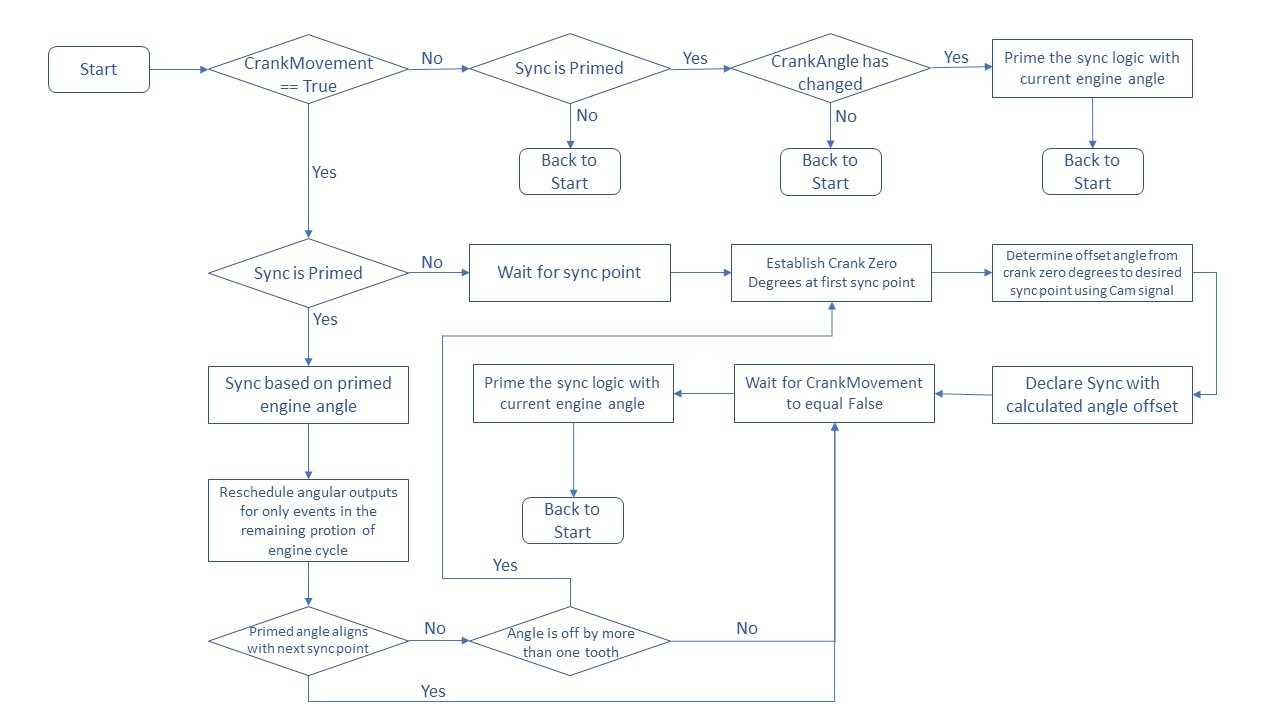To meet the increasingly stringent regulations on passenger vehicle fuel economy and emissions, automotive OEMs are frequently turning to mild hybrid technologies. A popular example is start-stop which allows the engine to turn off while a vehicle is stopped and then quickly restart with either the release of the brake or depression of the clutch, decreasing the time the engine spends idling. With such a system, synchronizing the engine and initiating combustion within the first engine rotation becomes paramount. To accomplish this task, the OpenECU™ platform for the M670 ECU is capable of reading a pulse-width based directional hall-effect crank sensor and providing a measurement of the current crank position even if the crank has stopped or moved backwards. Additionally, the M670 provides an infrastructure to resume crank synchronization after a restart on the second detected crank tooth in the forward direction instead of waiting to detect a crank region synchronization point as is traditionally the case. These features provide the necessary architecture to accomplish combustion quickly and reliably.

CAPTION: Flow chart of start-stop synchronization logic.
